Choosing the Right Airbrush Compressor
When it comes to airbrushing, having the right equipment is crucial for achieving the best outcome. This is especially true for airbrush compressors, as a poorly performing model can lead to frustrating issues such as a discontinuous airflow and an airbrush that keeps spitting and sputtering.
In this article, we will delve into the key factors to consider when choosing an airbrush compressor, including noise level, airflow and air pressure requirements, and the presence of an air tank. We will also provide a selection of the best airbrush compressors of 2024 to help you make the best choice for your needs.
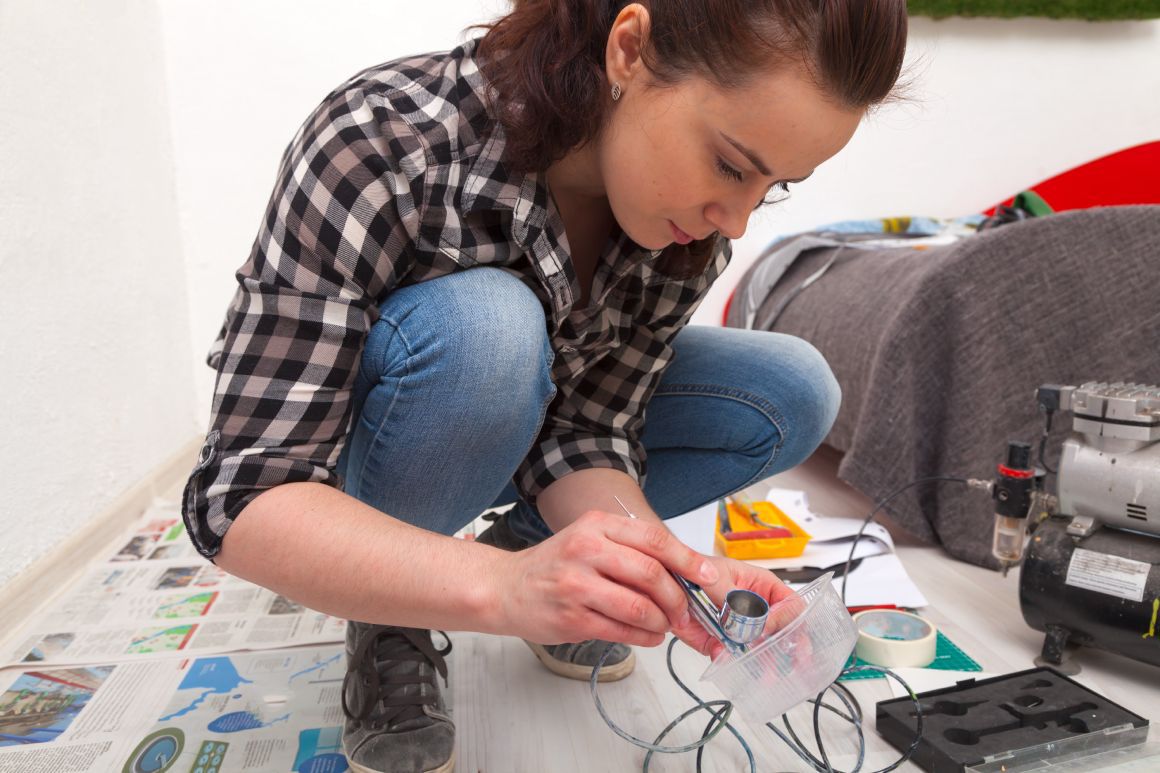
First and Foremost, Choose a Silent Airbrush Compressor
Air compressors commonly found in hardware stores such as Lowe’s or The Home Depot can be very loud at nearly 90 dB – about the same noise as a lawnmower. These compressors are primarily used for inflating tires, sandblasting, or operating a stapling gun.
You do not want that kind of compressor in your personal art studio! How could anyone concentrate with that much noise? That’s why you should definitely look for a quiet airbrush compressor. The quietest air compressors are piston compressors. They can either be oil-filled or oil-free.
Oil-filled compressors are quieter than oil-free models due to the lubrication provided by the oil, which reduces friction on the pistons. They generally top out around 40 – 45 dB, which is roughly equivalent to the noise of a refrigerator. However, Oil-filled compressors are quite expensive, and just like a car, you have to check the oil level regularly and add oil to the sump once in a while. It is also recommended to install a coalescing filter to prevent oil from contaminating your airbrush and mixing with your mediums, especially if you are using edible ink for cake decorating.
On the other hand, oil-less piston compressors generate a noise level of 47-55 decibels when turned on. While still relatively quiet, they are significantly cheaper than oil-filled compressors and do not require any oil maintenance.
How Much Airflow and Air Pressure Do You Need?
When choosing a compressor, you should consider both its airflow capacity and the pressure it can reach. For airbrushing, a minimum airflow rate of 0.5 CFM (cubic feet per minute) is typically required. However, if you need to spray continuously for an extended period of time, it’s advisable to choose a compressor with an airflow rate of at least 0.8 CFM.
Air pressure is measured in psi (pounds per square inch), and the recommended value is anywhere between 10 – 60 psi depending on the viscosity of the airbrush paint being sprayed. Thin paints typically require low pressure (10-20 psi) while thicker, more viscous paints may require higher pressure (40-60 psi).
Since most airbrush compressors come with an air regulator that allows you to adjust air pressure, it is best to get a compressor that will give you at least 60 psi. It will give you room to experiment with psi settings.
A Good Airbrush Compressor Should Have an Air Tank
When you use an airbrush, you do not want a pulsating airflow that will cause an erratic spray. This is why it is best to have a compressor equipped with an air tank. The tank stores the compressed air produced by the compressor and acts as a buffer so the airflow remains smooth and constant. It also traps moisture more efficiently than a filter would, ensuring that water droplets don’t mix with the paint.
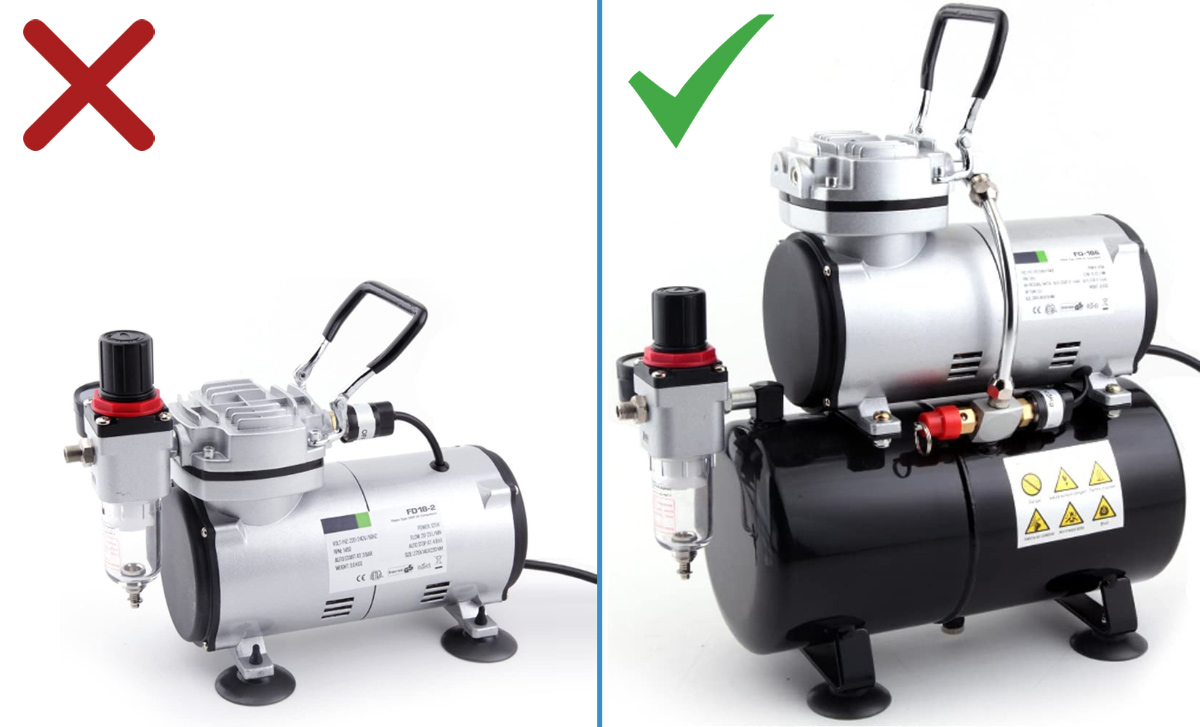
Compressors with tanks usually have an “auto-stop” feature, which means that the compressor’s motor will automatically shut off when the pressure reaches a certain level. It will only start up again when the pressure drops too low. That way, the motor wear and noise are kept to a minimum.
The bigger the air tank, the longer the compressed air will flow to the airbrush before the tank needs to be refilled. If you only plan to paint small canvases or miniatures, a small tank (3 liters) will do the trick. However, if you plan to use the airbrush for extended periods of time (painting very large canvases, for example), then you’ll need a larger tank (6 liters or more) to avoid interruptions in your work due to the tank needing to be refilled.
2024‘s Best Airbrush Compressors
| Paasche D3000R | Master Airbrush TC-326T | Iwata Studio Series Power Jet Pro | |
|---|---|---|---|
| Picture | 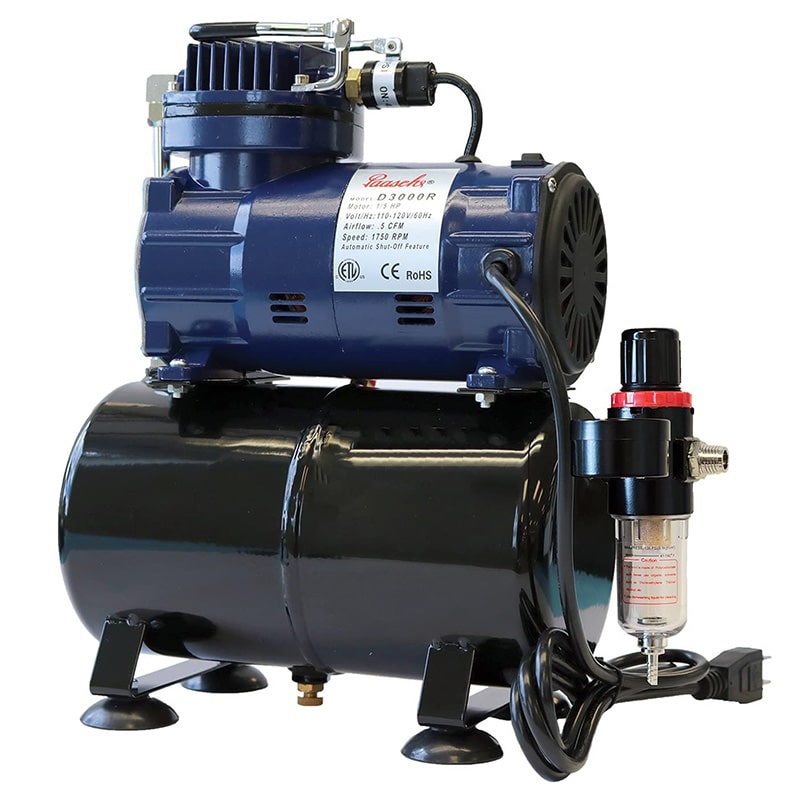 |
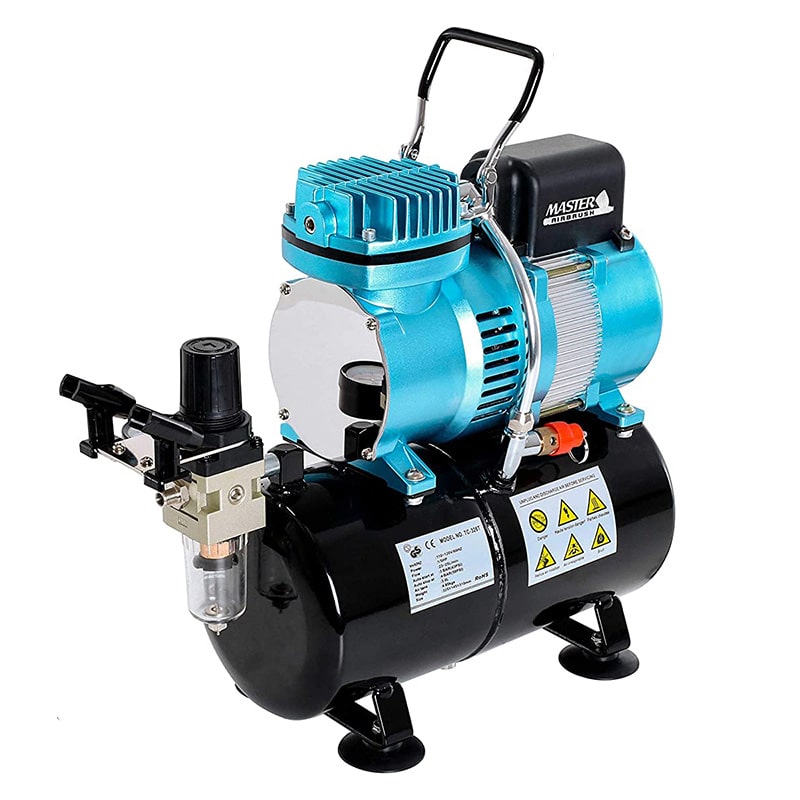 |
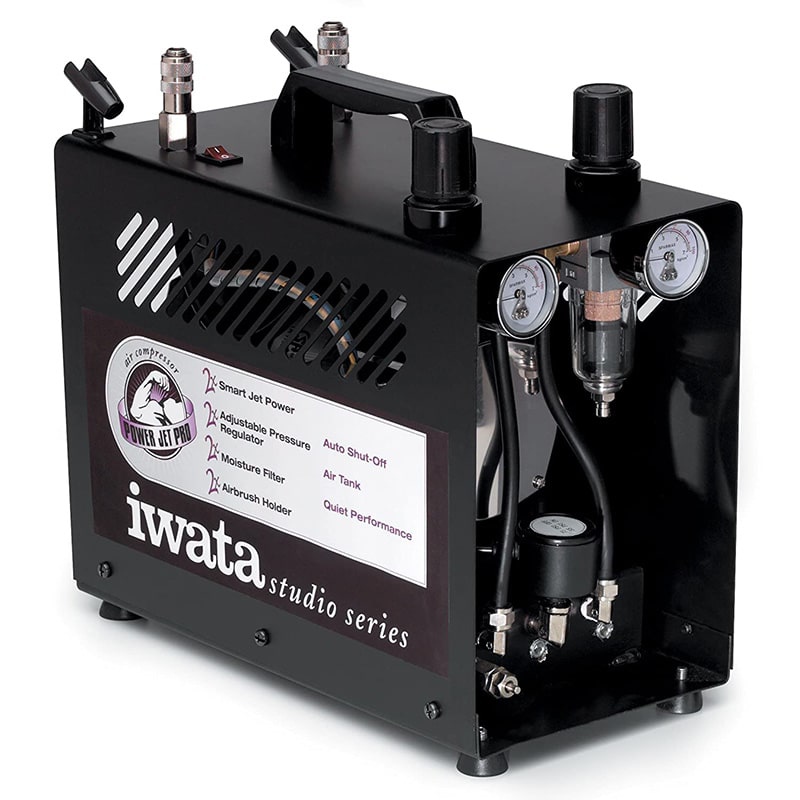 |
| Type | Oil-free piston compressor | Oil-free piston compressor | Oil-free piston compressor |
| Tank Size | 0.8 gallons
(3 liters) |
0.8 gallons
(3 liters) |
0.5 gallons
(2 liters) |
| Air Flow at 0 psi | 0.5 CFM | 0.8 CFM | 0.88 CFM |
| Max Pressure | 35 psi | 57 psi | 70 psi |
| Air Regulation |  |
 |
 |
| Auto-stop Switch |  |
 |
 |
| Noise | 47 dB | 47 dB | 50 dB |
| View at  |
View at  |
View at  |
Air Hoses & Connectors
To connect your airbrush to the compressor, you will need a flexible air hose, which you usually have to buy separately. Most airbrushes and airbrush compressors have a 1/8″ fitting.
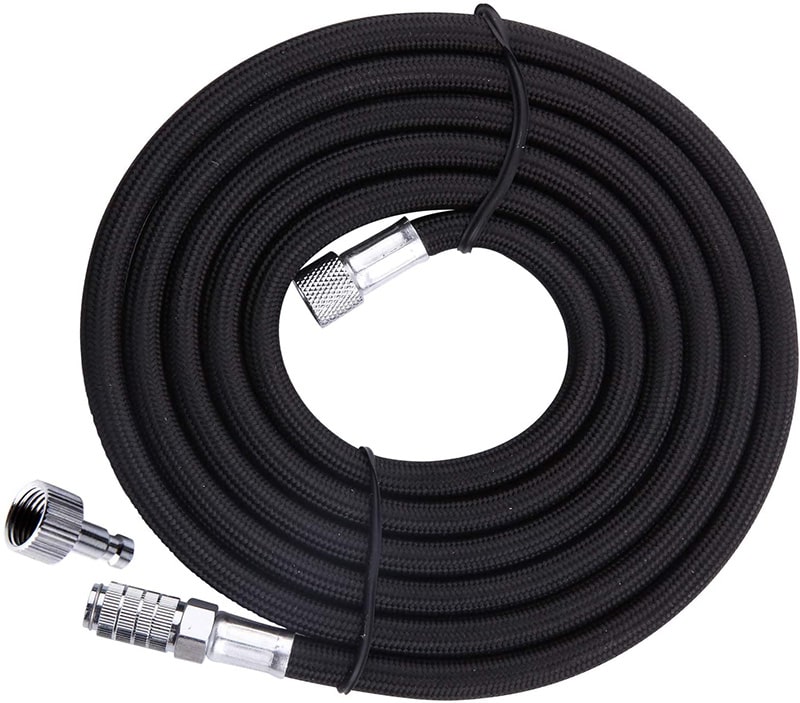
One option to consider is a compressor hose with a quick release connector. This type of hose allows you to easily and quickly connect and disconnect the airbrush from the compressor, and therefore avoid air leaks during the operation. This is especially useful if you need to clean or maintain your airbrush during a work session or if you are using multiple airbrushes at the same time.
